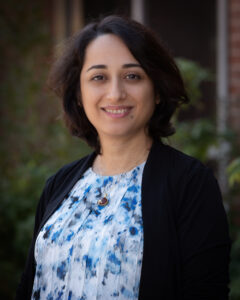Data Science Research and Education in the University of Utah’s Department of Mechanical Engineering is developing and applying machine learning and artificial intelligence to generate new models and learn governing equations using simulated or physical data sets.
Faculty and Labs

Amir Arzani
Lab: Computational Biomechanics Group
Our group does computational mechanics research with various applications but with an emphasis on cardiovascular disease. Research Interests include: computational fluid dynamics (CFD), nonlinear solid mechanics (growth & remodeling), scientific machine learning (sparse data-driven modeling and physics-informed deep learning), mass transport, dynamical systems, flow physics and transport in chaotic flows with different applications (biological flows, environmental flows, and heat transfer)

Jacob Hochhalter
Lab – Materials Prognosis from Integrated Modeling & Experiment (M’)
Researches emergent structural and material prognosis issues that involve the multiscale and stochastic nature of plasticity and fatigue cracking in structural materials. The research objective of the group is to leverage the ever-increasing capabilities in experimental observation and data analysis tools to provide new capabilities for prognosing reliability of advanced engineered structures and materials.
Yongzhi Qu
Lab – The Utah Lab of Artificial Intelligence Powered Systems
Research on creating machine learning algorithms to model real-world dynamical systems, merging traditional dynamics system modeling with modern scientific machine learning. Applications include manufacturing systems and processes, structure and fluid dynamics, and image processing.

Samira Shiri
Lab – Shiri Lab: Interfacial & Transport Physics
Research interests are in the areas of High throughput experiments and data analysis, underlying physics of active matter, bioinspired materials and mechanisms, and Biophysics: forensic science.
Ashley Spear
Lab – Multiscale Mechanics & Materials
Conducts cutting-edge research at the nexus of materials and structures. We couple materials characterization with high-performance computing and data-driven analysis (including machine learning) to address a wide range of research topics that are especially pertinent to the defense, aerospace, and manufacturing communities.

Scott Uhlrich
Lab – Movement Bioengineering Lab
We design wearable devices and mobile sensing algorithms that improve human mobility through the integration of biomechanics, machine learning, computer vision, wearables, and robotics. Applications include screening for injury risk using smartphone video, reducing joint pain from osteoarthritis using wearables, and creating video-based biomarkers of movement health for neuromuscular diseases.

